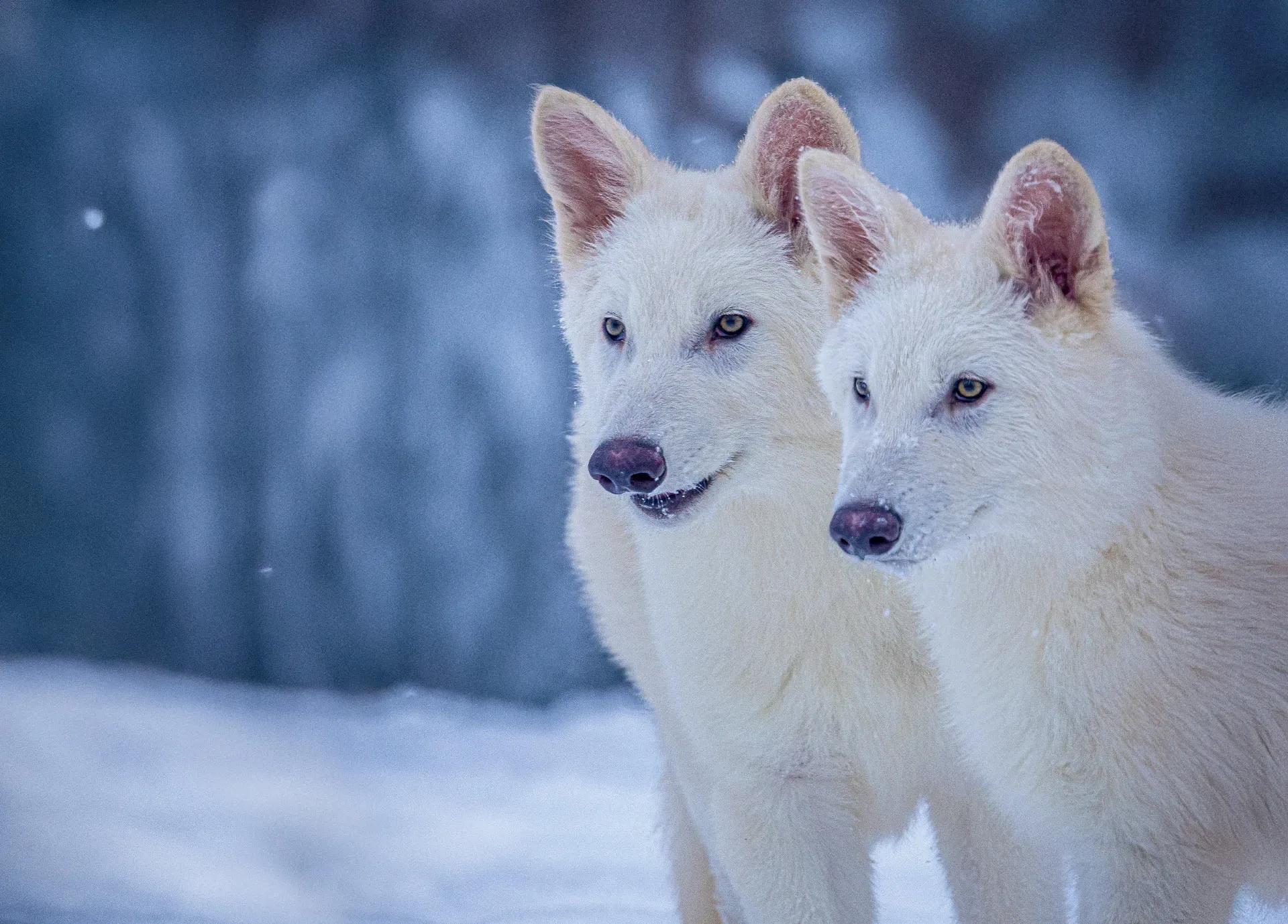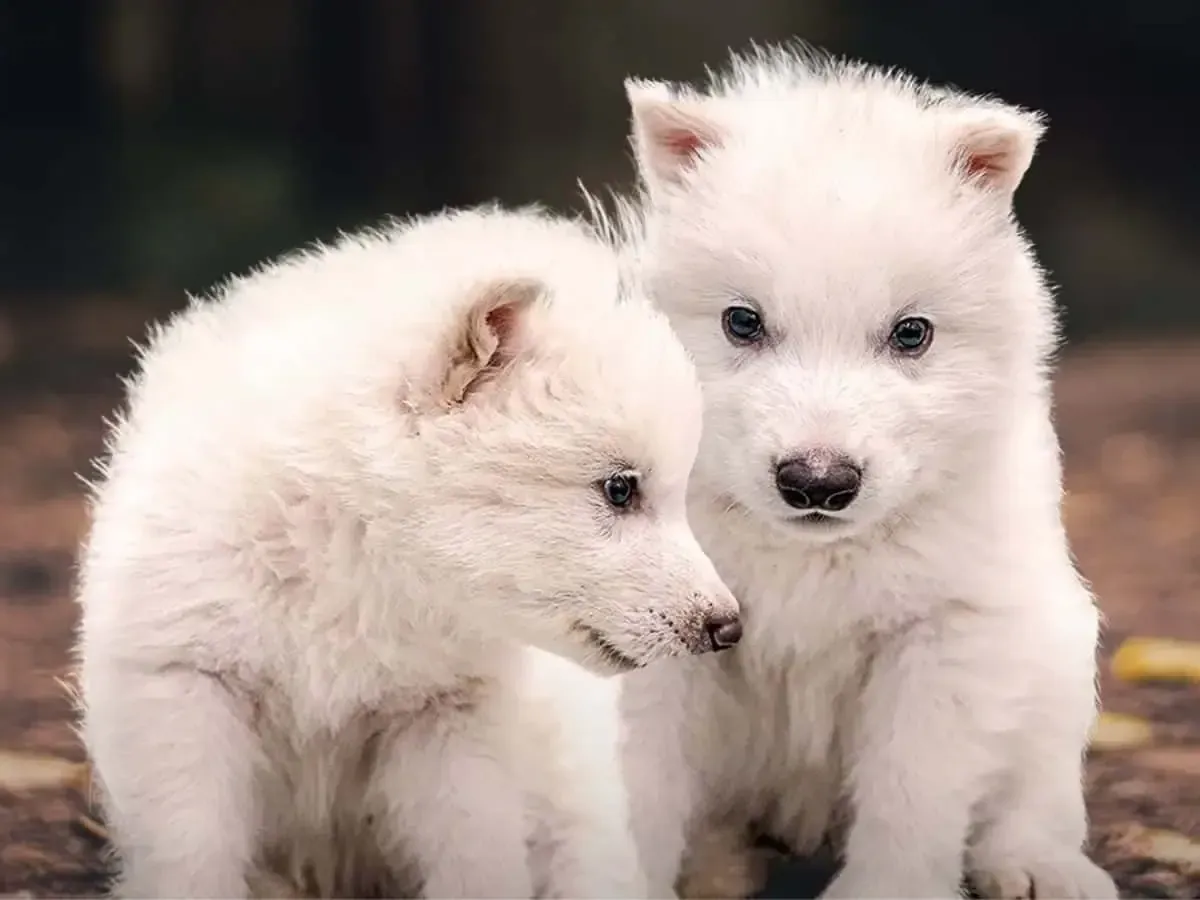Recently, the news has shocked the world, the American company Colossal Biosciences managed to restore a previously extinct species. The Dire Wolf (Aenocyon dirus) is walking the planet Earth again after more than 10,000 years of being extinct. This is raising many questions, from what does this mean, what didn't they see what happened in Jurassic Park, why and why did they do it? And one of the most relevant, how real is this? The answers to these questions are not so simple, but despite that it is impossible to deny the incredible work this company is doing, and these innovations if anything, are wonderful. Sure, that's just my opinion, but let's take it one step at a time, what does this mean? Well, the Colossal team didn't revive a direwolf from scratch and you could actually make the argument that it's not even direwolves the 3 animals that have become so famous these days. Unlike in the famous movie, Jurassic Park, they didn't start with direwolf DNA preserved in mosquitoes and then fill in with different sequences to complete and arrive at something relatively similar to what once walked the Earth. Actually the process was the other way around, in the sense that from sequences preserved in hundreds of fossils, the genome of this animal was studied and assembled. Once a relatively complete sequence was obtained, it was compared to present-day animals such as the gray wolf (Canis lupus) in order to use its genome as a surrogate and, using CRISPR editing technology, make key modifications in 14 genes and cause the appearance of key characteristics of the direwolf. [1]
So whether they are wolves from over 10,000 years ago or not, well a bit of both. The first thing is to clarify how it is that we would define an animal as having been brought back from extinction, whether its DNA was used as a base, implanted into an egg in a surrogate and born with ancient DNA 100% identical to that of the animals of the past, or as is the case, whether a modern DNA base was used and modified to be 99.9% identical to that of the animal in question. Both scenarios are real and have already been used, the key difference in the first one is that these animals usually do not live for a long time, a clear example is with the Iberian ibex, of which fresh samples were obtained from the last living specimen before it died and the species became extinct. Then in 2002 a team of Spanish scientists inserted the preserved genetic material into the egg of a mountain goat and caused the formation of an embryo. The result was a successful birth of an Iberian ibex, however, it did not last long and died soon after. [2] On the other hand, Romulo, Remo and Khaleesi have been alive for more than 6 months now, these wolves may not have 100% DNA from their ancestors, but their kinship is such even at the genetic level, that in reality it can be said with certainty that they are Aenocyon dirus. These animals demonstrate the great technological advance and the capacity that has been developed to manipulate genetic material.

So, let's say that if they are prehistoric animals, why and why do we care about this? Well, apart from being able to marvel at and appreciate the incredible milestone in science that this represents to be able to affirm that we are coexisting with animals that for one reason or another were no longer in this world, being able to do this kind of thing implies major things at the level of conservation of recently extinct animals, in addition to the fact that these advances in gene editing represent very important opportunities in health, CRISPR is already used in certain sectors, mainly as a diagnostic tool, but we want to use it in the treatment of genetic diseases, so the more this tool is used and the more it is developed, the more reliable and useful it becomes for use in other areas. Along with this, the process was long and complex, where not only gene editing techniques were revolutionized, but also veterinary techniques, blood extraction and isolation of specific cells. This type of innovation does not consist of mixing two liquids in a tube and implanting it in a wolf. It took months of work to complete the genome, identify the genes, obtain the necessary cells, clone them, modify them and then find subjects suitable for implantation, since most wild wolves currently have some crossbreeding with the common dog, which would drastically reduce the purity of the new direwolves, so they had to search for and find wolves with a much higher level of genetic purity, making the genetic screening process much more complex. This is what Colossal says on their page "The innovations derived from Colossal's research on wolf reproductive biology are not limited to this animal. During the Terrible Wolf Project, a novel method of cloning mammals was invented, with implications for numerous endangered species. Previously, mammal cloning relied on tissue samples, often obtained invasively, which posed challenges for endangered species. For Colossal, de-extinction is not just about creating an organism that is or resembles an extinct species. It's about merging the biodiversity of the past with the innovations of the present to create a more sustainable future." [1]

All this seems to indicate that de-extinction is already a reality, this will allow us to restore a natural balance as we have never seen before, outside the "key" animals for Colossal, which are the Woolly Mammoth, the Dodo, the Tasmanian Tiger and the Direwolf, these advances will allow us to recover animals such as Siberian tigers, the northern white rhinoceros, the little sea cows, and thousands of other animals in extreme danger of extinction or extinct recently. The threat of extinction is more prevalent today than ever, humans have already driven thousands of species to extinction, and currently about 30,000 species a year are being driven to the brink of extinction. These direwolves are not Jurassic Park come true, they are a beacon of hope to repair the damage we have done to the planet, they are the first step on a long road to helping the environment that needs it so badly. In addition to the new opportunities that this type of research will offer us personally in the future, because to you, reader, it is of little use in your day to day life that there are more tigers or vaquitas, but technological progress, specifically in the improvement of health systems, and the innovation of personalized medicine, represent an almost infinite potential to improve our quality of life substantially.
References
1. Colossal Bioscience. Direwolf [Internet]. Colossal. Colossal Biosciences; 2025 [cited 2025 Apr 9, 2025]. Available from: https://colossal.com/direwolf/
2. Mai L. Reversing extinction [Internet]. Time for Kids. 2017 [cited 2025 Apr 9, 2025]. Available from: https://www.timeforkids.com/g56/reversing-extinction-2/?lang=es


Comments